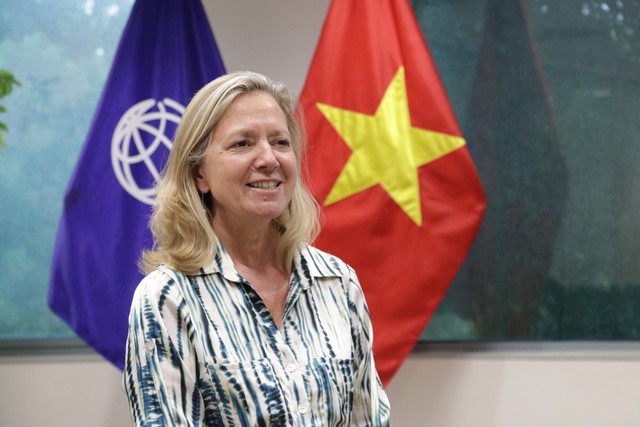80th National Day anniversary:
Viet Nam’s 80-year progress paves way for 2045 development goals: WB official
VGP - Viet Nam’s development achievements over the past eight decades have laid a strong foundation for the country to achieve its vision of becoming a high-income, green, and inclusive economy by 2045, according to Mariam J. Sherman, World Bank (WB) Country Director for Viet Nam, Cambodia, and Laos.

Mariam J. Sherman, World Bank (WB) Country Director for Viet Nam, Cambodia, and Laos
On the occasion of the 80th anniversary of National Day (September 2, 1945 – 2025), Sherman described Viet Nam's transformation since the launch of "Đổi mới" (renewal) in 1986 as one of the world's most remarkable development stories.
"From one of the poorest nations, Viet Nam has become a vibrant middle-income economy in less than four decades," she said.
Extreme poverty, which once affected more than half of the population, is now below 1%. Real incomes have risen six-fold, while life expectancy has increased by seven years since the early 1990s.
Sherman highlighted Viet Nam's deep global integration as a major success. With trade exceeding 160 percent of GDP—among the highest in the world—the country has become a key player in global supply chains, spanning textiles, footwear, and electronics.
The changes, she said, are also evident in people's lives, with a 57-million-strong workforce, more than 20 million new jobs created since "Doi moi," and over 80 percent of employment now in the private sector.
Sherman emphasized that the World Bank has been a close partner in Viet Nam's reform journey for more than 30 years, providing technical assistance and nearly US$26 billion in financing to support critical sectors.
The partnership has yielded tangible outcomes, including electrification programs that now cover 99 percent of households, rural transport and water supply projects, poverty reduction credit operations, and climate resilience initiatives in the Mekong Delta.
"It has always been more than financing," Sherman said. "It is about sharing knowledge and expertise, so that Viet Nam can design its own reforms while learning from global experiences."
Sherman noted that Viet Nam has already made important strides in institutional reform by consolidating provinces, merging ministries and departments, and piloting digital government. She stressed that as the economy grows larger and more complex, stronger institutions will be crucial to sustaining momentum.
"The critical shift will be for the state to move from directly driving economic activity to enabling it—creating a transparent, predictable, and rules-based environment where the private sector can thrive," she said.
A high-performing civil service, fair enforcement of rules, and strong accountability mechanisms will also be essential to ensure investment efficiency.
Looking ahead, Sherman said Viet Nam enters its next stage of development from a position of strength, with macroeconomic stability, a young and talented workforce, and a strategic location in Asia's growth belt.
However, global headwinds remain. The World Bank projects global growth of only 2.3 percent in 2025, underscoring the need for Viet Nam to lift its per-capita income growth to around 6 percent annually or the next two decades to avoid the middle-income trap.
"The path forward is quality growth, not just faster growth," Sherman stressed, pointing to the need for higher productivity, innovation, digitalization, skilled human resources, and diversification beyond labor-intensive manufacturing.
Policy priorities
To achieve sustainable growth, Sherman recommended that Viet Nam support private sector development to boost productivity, innovation, and competitiveness; reform tertiary education to upskill the workforce; increase sustained investment in critical infrastructure; prioritize green growth and low-carbon development; and strengthen institutional capacity and ensure inclusive development.
She said the World Bank Group—including the International Finance Corporation (IFC) and the Multilateral Investment Guarantee Agency (MIGA)—is ready to provide long-term financing, investment guarantees, and global expertise to help Viet Nam reach its 2045 goals.
"We can support Viet Nam to ensure resources are deployed effectively to accelerate its journey to high-income status," Sherman affirmed./.

